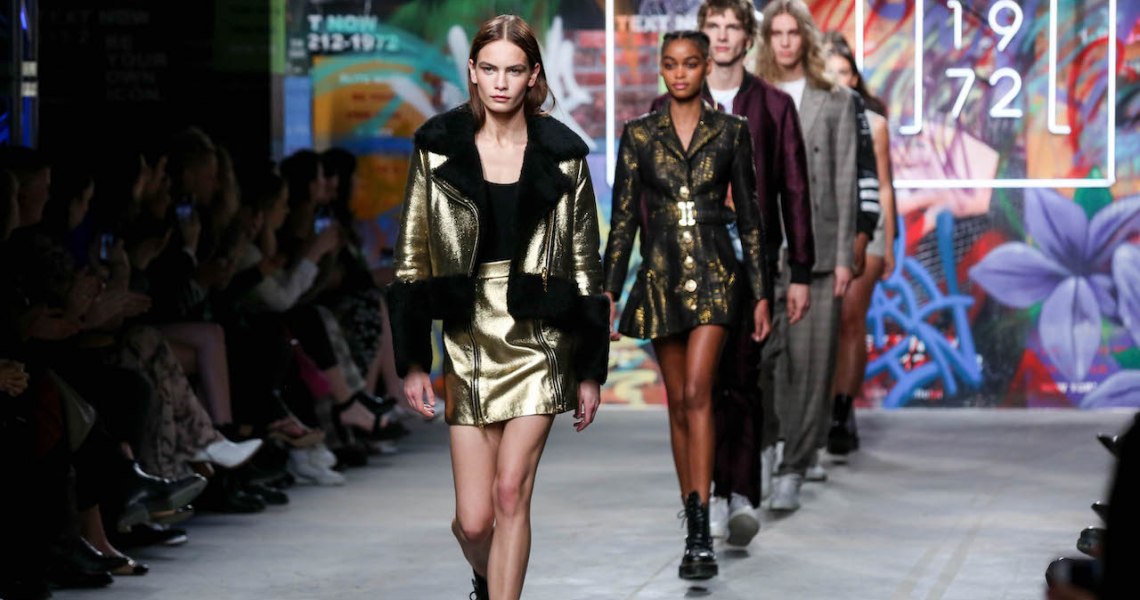New York Fashion Week is one of the most important fashion events on the calendar for the hundreds of stylists, photographers, models and events staff who work the event twice a year, But with the event currently limited to just a few days and most in-person shows likely canceled, those people who rely on the event for work are left searching for a replacement.
Photographers, in particular, have been hit hard. Megan Cencula-Tutt, a freelance photographer who covers fashion week for WWD and Shutterstock, said she and many other event photographers have had to find new work since regular gigs including NYFW shows have been canceled.
“I can’t speak for everyone, because plenty of photographers are underpaid, but NYFW is great because you can stack a lot of shows and jobs for some of the larger publications into a week, and get paid pretty well,” Cencula-Tutt said, although she noted that . “I had plans to travel to Paris and Milan this year, too, because it’s worth it, although obviously that’s not happening anymore. I don’t imagine it will be safe enough to move forward with New York’s fashion week this September.”
Last February’s NYFW counted more than 80 shows on the official calendar, although there are usually many more hosted outside of the CFDA’s purview. One photographer who asked to remain anonymous said that they were often paid up to $500 a show, and shot four or more shows per day over the course of a week. Shooting all of fashion month twice a year accounted for up to 30% of their annual income.
CNBC reported in 2017 that NYFW photographers are among the best paid photographers in the world, based on average salary data from PayScale. For salaried photographers, like Stephen Lovekin who is a staff photographer at Shutterstock, the financial hit of losing NYFW is less severe.
“I’ve been doing NYFW every season for 20 years now,” Lovekin said. “Aside from the regularity of seeing colleagues and people from Europe you might not see often, you also get to see new trends, shoot creatively, advance your career. It’s the biggest regular event I do, although because I’m a staff photographer, it doesn’t affect me quite as badly to not be able to do it. For freelancers, though, it’s a punch in the gut to miss out.”
The CFDA is currently sharing guidelines and resources with brands on how to host shows digitally this year, since it’s highly unlikely that any open-to-the-public events will be taking place. Cencula-Tutt and Lovekin said they haven’t heard any official communication from the CFDA or IMG about whether they will be able to shoot any shows this year.
Ad position: web_incontent_pos1
Cencula-Tutt said that the jobs currently happening require temperature checks and other precautions that would be difficult to pull off in a large event setting.
“Getting in the pit with everyone all stacked on top of each other — that’s not something you like to do, even in normal times,” Lovekin said. “I can’t imagine anyone wanting to do that now. I can see the brands doing things in small studios, maybe with plexiglass barriers or something. But I don’t know how you’d go about doing a normal fashion show right now in a safe way.”
Lovekin said, in the meantime, he’s doing much more news photography than he’s ever done before. Cencula-Tutt said she’s been finding an outlet in activism, specifically with a focus on gender equality.
Lovekin said it’s a tough time for photographers right now. Freelance photographers get paid a median of around $30,000 per year, according to some sources like Glassdoor and PayScale, while fashion photographers make closer to $40,000. Those who shoot NYFW make up to $62,000, usually paid for by media outlets like WWD, Condé Nast and Hearst. A number of brands have started outsourcing photography to influencers and their own employees, which isn’t helping the situation.
But Cencula-Tutt said there’s hope for photographers.
Ad position: web_incontent_pos2
“FaceTime photo shoots have been followed by socially distanced photo shoots with small teams” she said. “They have begun to pop up, which will hopefully provide some relief to photographers who have lost work and give us the opportunity to keep working.”


